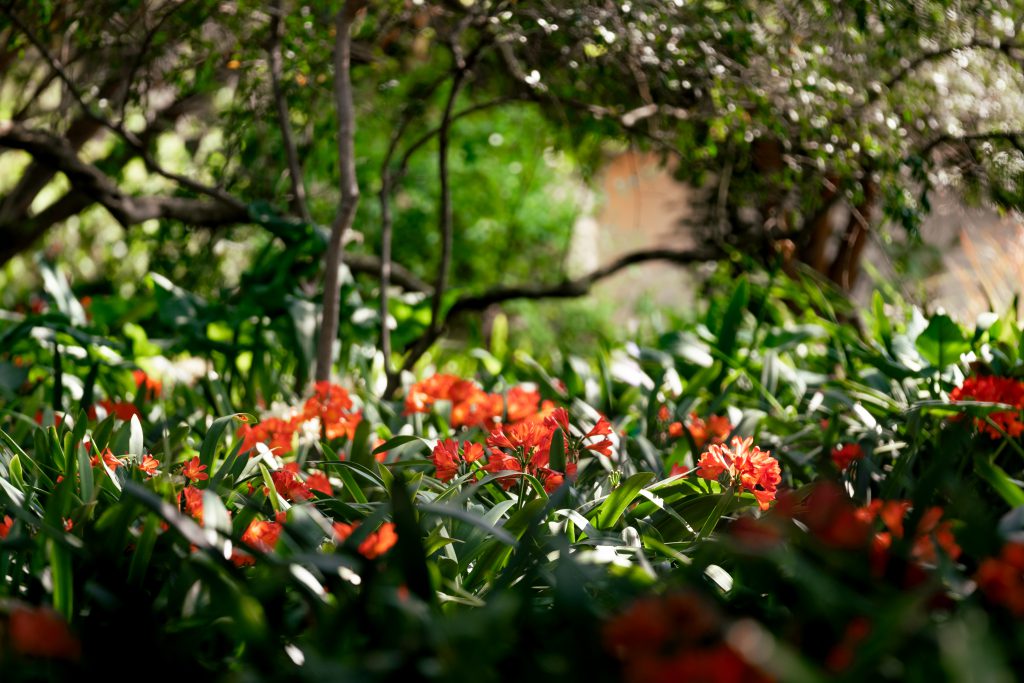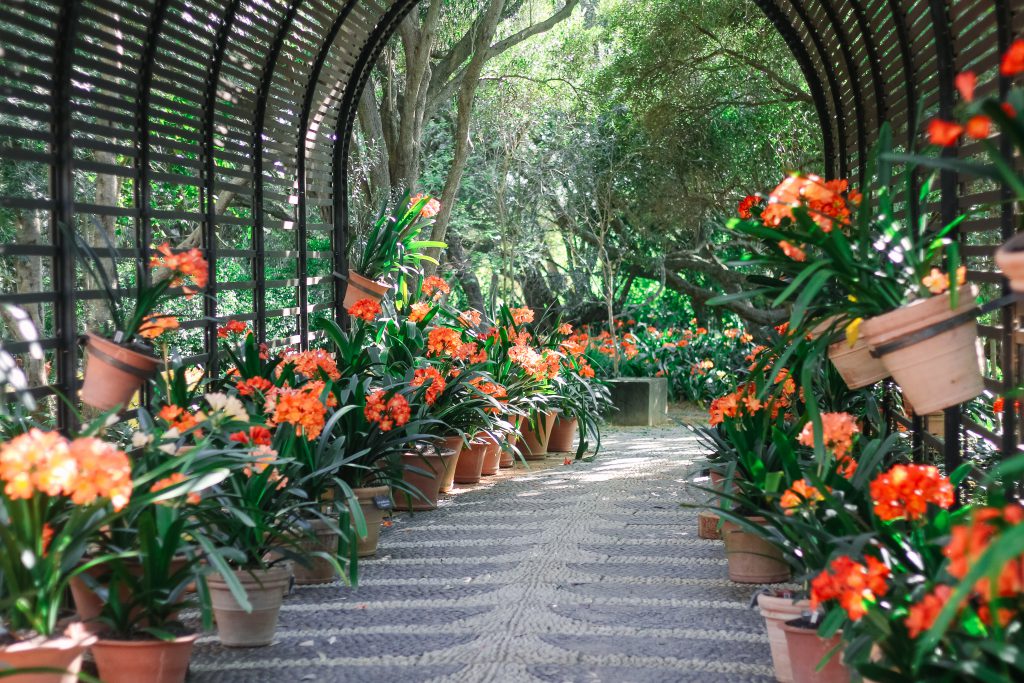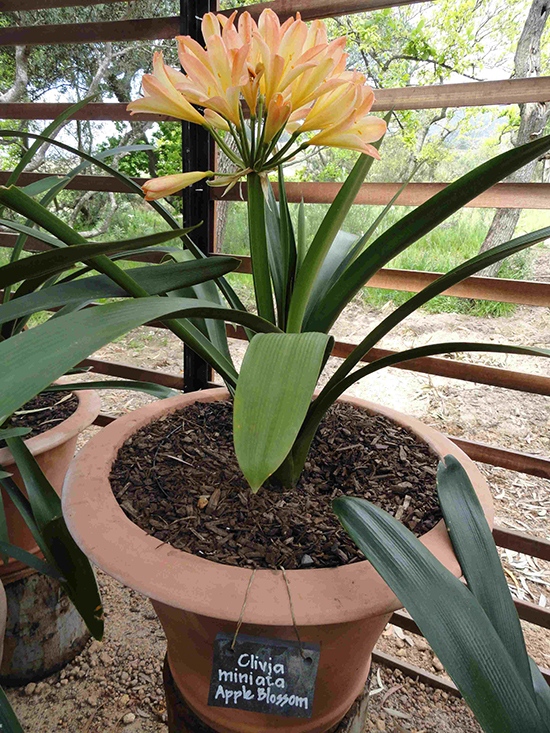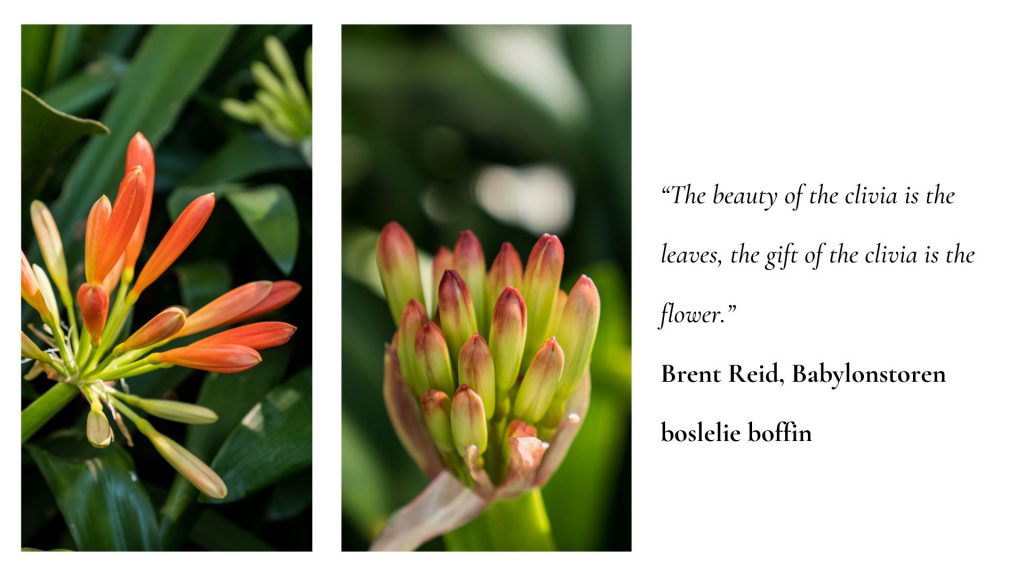
Restaurants
Spa
Day Visits
Shop
Functions
16°C
September 16th, 2024
The annual clivia flush, when thousands of clivias burst into vibrant hues of red and orange, is an eagerly anticipated event. For its beauty, but also because it’s the fiery full stop at the end of winter. Here are ten of the many reasons why we love these generous, unassuming plants.
1.There are thousands upon thousands of clivias in our garden and 700+ in the potted collection. Many are rare hybrids from some of the world’s best breeders and collectors. Babylonstoren’s clivias comprise three significant collections: the Hans Roos collection, the Billy Rule collection, as well as the Mick Dower collection – regarded as one of the top clivia collections in the world.

2. Clivias are indigenous to South Africa and Eswatini and are endemic to the Eastern Cape and KwaZulu-Natal. In many of these valleys, clivias thrive in the wild. They’re also called the Natal lily or bush lily.

3. If you’re a fuss-free gardener, clivias would be one of your best companions. They require no maintenance or pruning. The only time you need to intervene is to remove dead leaves or to create space when your pot is overcrowded.
See our video on repotting clivias here:
4. Temperature can affect the brightness of clivia flowers. Colder temperatures typically ensure darker, more intense colours, while warmer temperatures result in milder-coloured blooms.
5. The Babylonstoren collection includes all six clivia species, namely Clivia nobilis, Clivia miniata, Clivia caulescens, Clivia gardenii and the more recently discovered Clivia mirabilis and Clivia robusta, as well as many unusual hybrids.

6. Clivia mirabilis is the dark horse of the clivia family. It is found only in the Oorlogskloof Nature Reserve near Nieuwoudtville in the Northern Cape Province of South Africa. Babylonstoren has a few of these unique plants in its potted collection. Unlike other clivia species, it thrives in winter rain and loves a very harsh summer. Mirabilis plants have thick, fleshy roots up to 20 mm in diameter, which function as water storage organs during hot, dry summers.
7. The Clivia miniata is a precious specimen collected in the late 1990’s in the Eastern Cape by renowned clivia enthusiast John Winter. It is also called ‘Apple Blossom’ due to its light pink petal tips. Look out for its blooms in the Puff Adder walkway this season.

8. Among the specimens in the Babylonstoren collection are the light peach ‘Emma Leslie’, as well as the beautiful, pale-yellow ‘Margot D’ from the Mick Dower collection. These flowers were named after Dower’s grandchildren.

9. Clivias can easily be propagated from seed. Simply wait for the pollinated flowers to form seed bulbs, then remove these, sprinkle with ground cinnamon (a wonderful natural antifungal) and germinate them in a warm environment. When visible roots form, transplant them to a shady spot in your garden. Clivias enjoy shade and good light, but never full sun.
10. Natural pollination happens when sunbirds transfer pollen from one flower to the next. Breeders can also cross-pollinate distinct species, but it takes a light touch – keep your fingers crossed that next year’s flower flush will show good results.
If you’d like to try your hand at cross-pollination, check out this video.
September is clivia month at Babylonstoren. Join us in celebrating these indigenous flowers in the garden, the Puff Adder walkway and the Scented Room. Book a free garden tour guided by an experienced gardener. Tours take place daily at 10h00 and during the month of September an additional tour is hosted from Wednesday to Sunday at 12h00. Booking is essential.